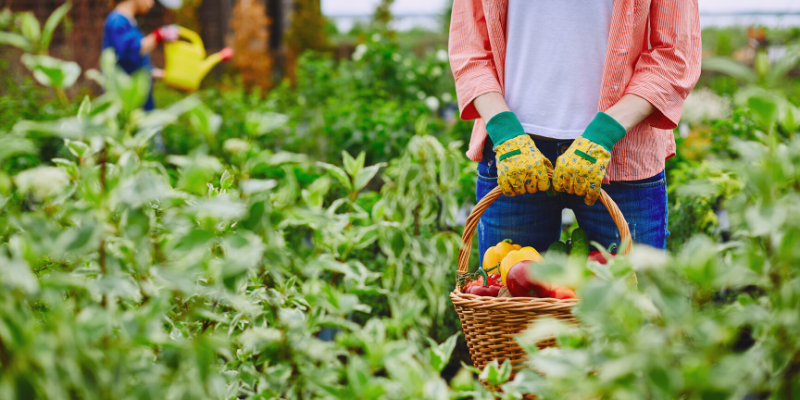Post-Harvest Challenges that Affect Quality of Agricultural Produce and How to Prevent Them

Agricultural productivity is a fundamental factor towards food security, and for the farmer, it also dictates profitability. While agricultural value chain begins from fundamental but easier components like the selection of the right seed to plant, understanding edaphoclimatic factors, plantation and management of crops among others, there is a huge task in the final part of the value chain that assures the produces gets to the consumer in the best possible quality. The post-harvest sector includes all points in the value chain from production in the field to the food being placed on a plate for consumption. Postharvest activities include harvesting, handling, storage, processing, packaging, transportation and marketing. (Mrema and Role, 2002)
Despite the remarkable progress made in increasing food production at the global level, the FAO estimates that approximately half of the population in the Third World does not have access to adequate food supplies. There are many reasons for this, one of which is food losses occurring in the post-harvest and marketing system. Evidence suggests that these losses tend to be highest in those countries where the need for food is greatest. This describes the major relevance and needs to ensure proper handling and protection of the produce after the harvest. Beyond promoting access to food, maintaining the taste of each product is fundamental to the market. Before the produce reached the market, there are multiple factors that can cause them harm or damage. In this article, we look at the three major hurdles and how farmers, distributors and other stakeholders can overcome them.
Poor food quality and safety conditions
In most cases, this is a challenge that farmers could ignore from earlier on in the production process. It comes in many ways, including pesticide use, contaminants, pathogenic infections, nutritional deficiencies among others. Some of these issues despite being avoidable, some producers and farmers ignore them only to realize a loss when their produce is in the market or ready for export and get rejected. Some of them like contaminants like biological toxins can occur in storage facilities and during food handling processes. This problem could result in a huge economic waste although the right measures can prevent it.
To maintain the best food quality and assure safety of the production, into the market, farmers should ensure appropriate quality measures by analyzing the soil just before planting to continuously repeated lab analyses during the production process to ensure corrective measure in case of any undesired results. Just before getting the products into the market, the same should be done with the aim of ensuring healthy produce into the market. This is our expertise at Tecnosoluciones, and we invite you to be partners in the process of ensuring the quality of your produce. Feel free to reach out to us at Esta dirección de correo electrónico está siendo protegida contra los robots de spam. Necesita tener JavaScript habilitado para poder verlo.
Poor Storage facilities and conditions
Storage is an elemental part in the post-harvest value chain. It is important in large scale production when the food is typically taken into the market after a few days or weeks. It is done to increase the lifespan of produce, however, if wrongly done could cause a huge loss. Understanding product life span is as important as selecting the appropriate storage mechanism. While some products are fine with the traditional preservation methods like drying some require more specified preservation methods like freezing, refrigeration and even addition of chemicals to increase their lifespan before going bad.
Despite having the right facilities or food preservation, knowing the ideal conditions for the method is equally important to prevent the food from getting infected by pathogens, going bad before time or getting intoxicated among many other possibilities. For this reason, it is fundamental to understand the necessary methods of food preservation and adequate facilities for each product. It is also encouraged to store products separately depending on each requirement.
Physiological deterioration and Infections
An increase in the rate of loss because of normal physiological changes is caused by conditions that increase the rate of natural deterioration, such as high temperature, low atmospheric humidity and physical injury. Abnormal physiological deterioration occurs when fresh produce is subjected to extremes of temperature, of atmospheric modification or of contamination. This may cause unpalatable flavours, failure to ripen or other changes in the living processes of the produce, making it unfit for use (FAO). This is the most common challenge when there are no right preservation measures in place. It is easily avoided by investing and understanding the most appropriate preservation methods and conditions.
Although in most cases, not taken into much consideration, post-harvest value chain is a basic and monumental aspect of agricultural production. It largely affects the quality of products for consumers, profit margins for farmers, export conditions and consequences for a country among many others. Ensuring success at this stage of production should be easy if well considered.
References
FAO (1989). Prevention of post-harvest food losses fruits, vegetables and root crops a training manual. Document compiled by John Burden and R.B.H. Wills. FAO Training Series: no. 17/2. Italy
Mrema, C. G. and Rolle, S. R. (2002). Status of the postharvest sector and its contribution to agricultural development and economic growth. 9th JIRCAS International Symposium – Value Addition to Agricultural Product, pp. 13-20.
Post Harvest, Agricultural Productivity, Safety Conditions, Storage, Food Chain Supply
- Autor: David Maduri
